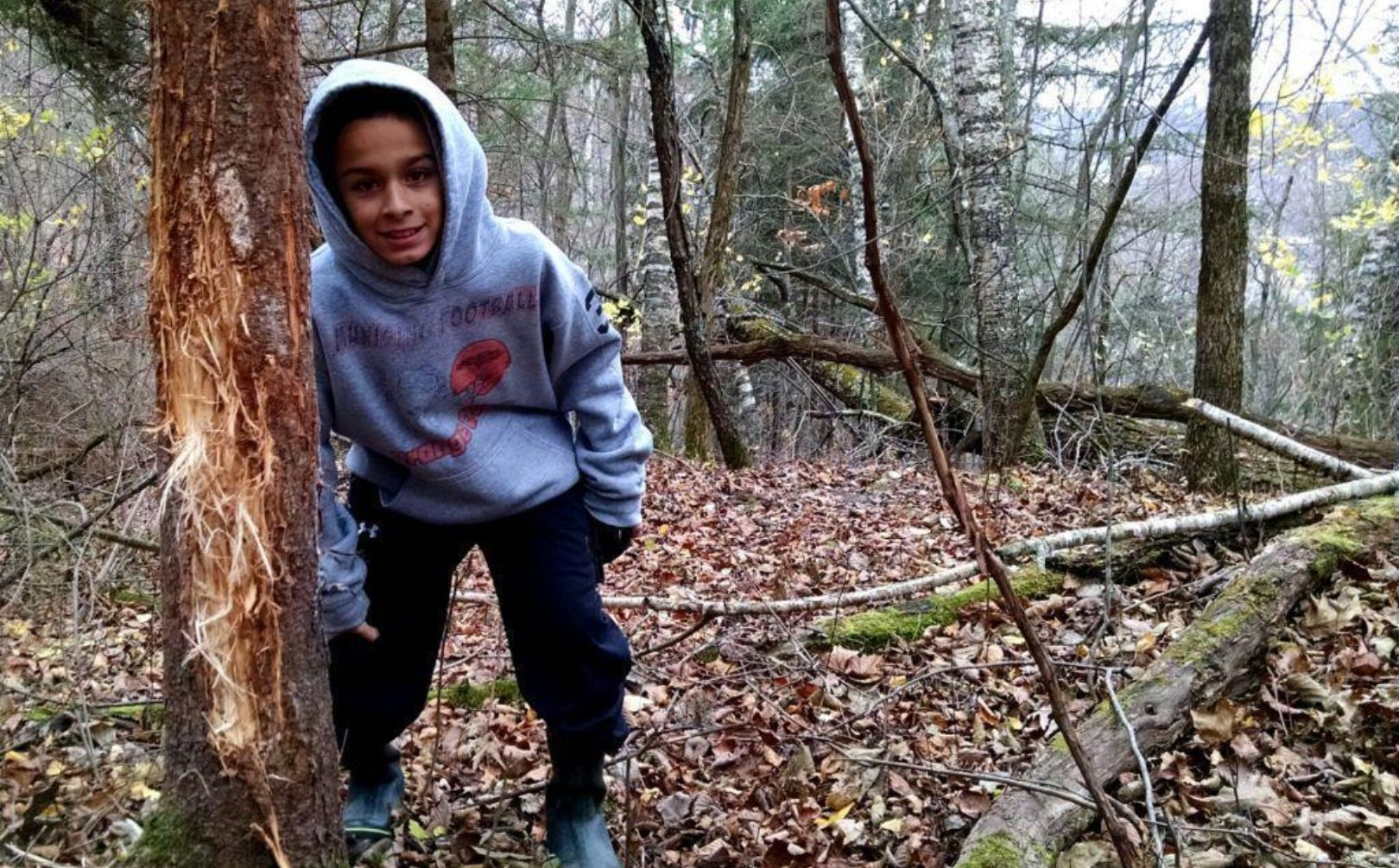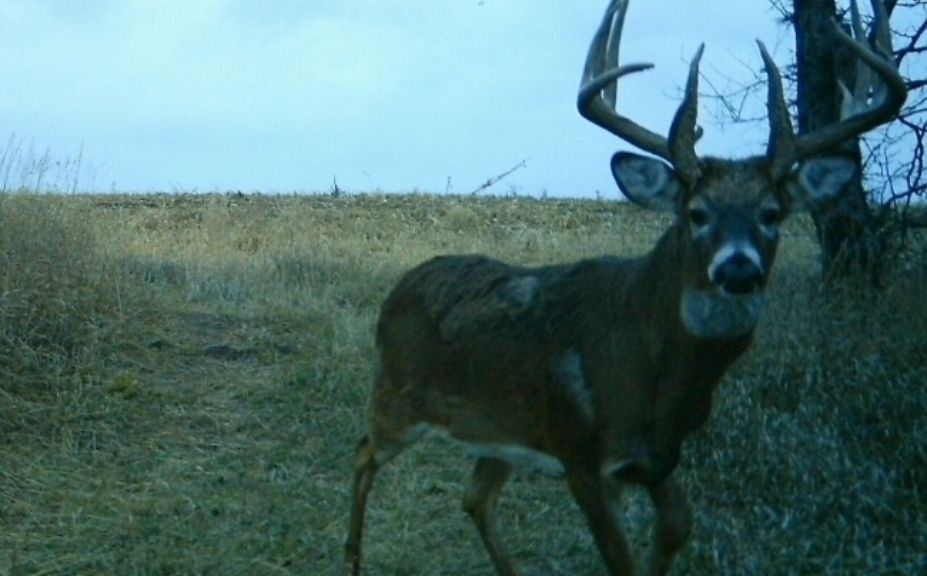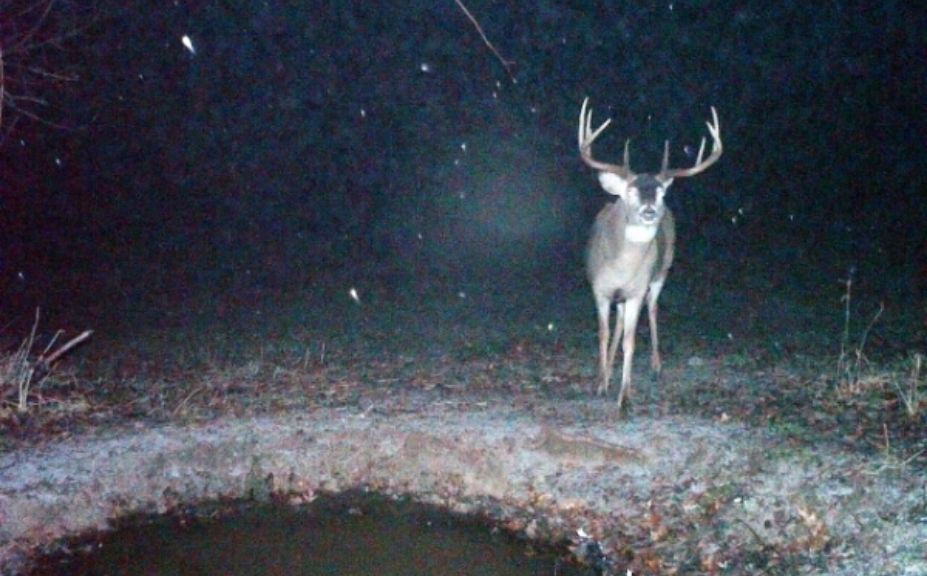
*Make sure to check out my latest mature buck staging area too, titled ""Mature Buck Staging Area Tactics".
What is a deer staging area, and if you do recognize one, should you ever hunt it? A typical, natural deer entire movement (in it's most basic form) consists of a pretty specific set of conditions, flowing from heavy interior cover in the back, to a major food source in the front:
1. Mature buck bedding area located towards the innermost and secluded portions of a particular chunk of habitat.
2. Immature buck bedding or doe family group bedding next
3. Doe family group bedding within the first portion of substantial, adequate bedding cover adjacent to a major food source.
4. Deer Staging Area
5. Major food source.
Which portion of that back to front movement is the most important? All them are, but how well do you protect and preserve your deer staging areas? A safe and secure (to the deer) staging area is critical as it relates to the entire natural movement of daytime bedding to feeding and back again. While a major food source maintains the focus of movement during the evening hours from protected "sanctuary areas" during the day, a deer staging area is the glue that holds it all together.

*Throughout the past 11 years of scouting deer herds for a living, an extremely consistent pattern of natural deer movement reveals itself over and over again, no matter which State I am working in. To read more about how this natural pattern ultimately effects you and your hunting success, try reading "Natural Whitetail Movements".
A Deer Staging Area Set-up
Looking back, my 2010 season was full of the most mature buck opportunities in nearly 3 decades of passionately pursuing whitetails. In fact, in 24 archery sits I was fortunate enough to have 6 opportunities stretched out from my 2nd sit in late September, to my last sit in mid-Nov. Good opportunities. Great opportunities! At the same time, the 2010 season was also full of more wasted mature buck chances than Ive made in the my entire hunting career, combined. Yep, it was a very humbling, gruelingly long, but at the same time still a highly rewarding few months. This particular story starts with my last and greatest mistake of the entire season, which embarassingly enough occured on my 7th opportunity for the year.
Through 2012 we were able to recognize and hunt a particularly stunning main-framed 8-point, for a full 5 seasons. In 2010 he was a 5-6 year old with a HUGE body that would have gone well over 200#s field dressed, carried a huge 24-25 inside spread, most likely 25" main beams, and probably 30 of antler tines on both sides. No matter which way you prefer do the mathscore or weight, he was a super stud buck. He liked getting his photo taken during daylight hours, and for several years I enjoyed playing cat and mouse with him. Like the majority of the oldest bucks I have become familiar with, the Wide 8 lived in a very confined daytime security area, which made his movements fairly easy to predict. In fact, although he was highly photogenic on a daily basis during late October and November, at least 95% of the pictures that we captured of him were taken from only 1 camera location. The Wide 8 and others like him may have a home range of several miles during the nighttime hours, but as hunters and landowners we need to be concerned with where these guys are spending their daytime hours. Some of the reasons that you may find that you only capture these mature bucks on 1 camera set is because if their daily pattern is undisturbed, their daytime security cover very small, and if their bedding area hidden from hunting pressure, they can grow pretty darn old!
However, its often not the daytime security cover that makes a mature buck tough to kill, its his staging area. What is a deer staging area and how do you hunt a deer staging area? In my experience a staging area is a very secure social area that a mature buck feels safe traveling through, before entering his preferred evening food source. Its also an area mature bucks seem to often like cruising through during mid-morning hours. A staging area often has a high stem count of grasses, weeds, or saplings but most importantly it is an undisturbed pocket of cover. And when I say undisturbed, I mean just thatif you bugger it up only 1 time just prior to or during the season, its often ruined for the majority of the rest of the year. A staging area should act as an incredibly safe gateway between daytime bedding opportunity, and evening food sources. It is the link that holds together then entire line of daylight deer movement and if you break the link...you end the daily movement that not only can sigfinicantly assist you in your quest for a monster buck, but to actually create that monster in the first place.
The reason the Wide 8 was so tough to kill was also the reason that he ultimately survived for so many years. His staging area was so close to his daytime security cover, so close to doe family group movements, and so close to the field edge he prefered to enter that not only could you not hunt his movement to his staging area, but you couldn't hunt the staging area either for fear of breaking the gluewithin his daily pattern of movement. While preserving the Wide 8's daily movements for many years, we were able to create an opportunity for him to grow very old, but were also left with only few hunting options. We tried to catch him on an adjacent cruising bench, various habitat funnels, or possibly even the waterhole he seemed to stop by so frequently for a quick drink and a snapshot. A firearm in this particular situation really tilted the odds in our favor, and that was certainly the case when during WIs muzzleloader hunt I saw his antlers approaching towards me over the ridge from his staging area, less than 80 yards away, about a 20 minutes before dark. An easy kill, right?
I will finish the story of the Wide 8 later which includes the final component of a staging area and another near miss, but first I want to leave you with the key components of a staging area. These are the conditions that I have been able to recognize in order for you to not only be able to preserve the staging areas on your own hunting land, but how to hunt those staging areas as well.
7 Components of a Staging Area:
1. A secure pocket of cover often an acre in size that serves as a secure gateway between bedding and feeding areas.
2. Completely free from hunting pressure.
3. Connected by 1 or more travel corridors that offer strong un-pressured movement opportunities during the daylight hours.
4. Enough rubbing and scraping habitat to offer a high level of interest for social communications.
5. Typically, but not necessarily, a high stem count of young growth per acre.
6. On dry parcels a SMALL water source can often be an incredible addition to a staging area, IF you can hunt the area. (It accomplishes no good if you have a great waterhole, but can't hunt it with a bow)
7. In areas with a good change in topography, staging areas are often located on a slight bench or other favorable elevation change.
I cannot stress enough that this area has to be secure from hunter movements. That doesn't mean that you don't take a stand location along side of the staging area with the perfect approach, departure, and wind patternbut you can not let your site, sound, or scent enter this sacred area for it to be effective. Thats why it is so difficult when a bedding area or food source is located directly adjacent to the staging area. With poorly located habitat features of food or cover nearby, you risk a deer hearing or seeing your movements into or out of the stand location, which can lead to a certain end to the staging area movement. If you are attempting to create this little hotspot on your small parcel or find a similar location on public land, it pays to recognize enough separation between your food source and bedding areas so that you can access this area without the potential of disturbing a deer.
Did you notice that food is not mentioned within the conditions of a staging area? Some of the best staging areas might be a small and defined oak bench, a hidden cluster of apple trees, or some other natural food source, but rarely do these areas include any type of a man-made food source, including a food plot. If an area is open enough to contain a food plot, consider it to be just that-a food source, and not a staging area. The above picture is a great example of a deer staging area. It isn't a food source, it's not a bedding area and it's also an area that is nearly impossible to hunt (unfortunately!). The area does however, represent an incredible link between bedding and feeding.
Do you want to know what the staging area looked like that the Wide 8 lived in? Check out this short video clip and see if you can recognize any of the 7 components of a staging area.
How Do You Hunt a Deer Staging Area:
1. Secure hunter access that does not allow you to disturb any bedding or feeding areas, either on the way inor way out.
2. Enough separation between the bedding and feeding areas on either side of the staging area to lengthen deer movements, making your access more secure, and the deer more vulnerable.
3. Defined deer travel corridors that offer very precise stand locations that do not allow your scent to disturb the movementeither while on stand, or scent left within the woods traveling to and from the stand location.
As in the case of most habitat improvement designs, it all starts with access and an effective staging area. If you cant access, sit in, and depart without spooking deer you simply cant hunt the location. If you own less than 1000 acres you cant afford to create deer/human encounters because the land is not big enough to encompass the negative reaction that it creates from the local deer herd. Accessing a defined travel corridors for a stand location can be a great way to take advantage of a staging area, as long as you are not disturbing the deer within either thevbedding or feeding areas.
Conclusion
The temptation is to focus on the creation of a staging area, without taking into account the exterior factors of the staging area that lead to its effectiveness. You cant buy a staging area in a bag, or pull up a fancy Sure-fire design of a staging area on-line no different than the perfect food plot or bedding area. A secure location, social opportunity, secure access from bedding and feeding, and absolutely zero human intrusion is key to any staging area; and if you can accomplish the combination of those ingredients, you will succeed.
The Wide 8 loved to enter a staging area within 100 yards of his daytime security cover. The length of travel in itself wasn't too bad, but when you consider the amount of adjacent high-quality doe family group bedding and the overall width of their movement, it creates a pretty tough hunt! The Wide 8s staging area was a mix of briars and middle aged aspen flanked by a few oak trees, including a small bench just inside the field edge that couldn't be viewed by anywhere within the field that would offer an appropriate stand location. Simply, as long as he stayed within his daytime security cover, he could take his time accessing the field edge through a high-security deer staging area that cant be hunted.

*The Wide 8 was a local legend who lived to be 8 years old! With 5 seasons of pictures he was an incredible beast to experience, observe and day dream about harvesting some day. The Wide 8 lived to such a ripe old age not only because he escaped at least a couple of near misses, but because his daytime bedding area(s) were protected and preserved during the hunting season. To read more about what it takes to attract, hold and grow a buck to the status of a legend, make sure to check out "Strategies for Creating a Deer Sanctuary".
When I back-tracked the Wide 8s movement after my opportunity during the 2010 WI muzzleloader season, I found he had fed within his hidden location in the field after exiting his staging area for enough time to forage through a 5 diameter feeding circle within 10 of fresh snow. He had left his bedding area long before I saw his antlers crest the ridge with only 20 minutes of shooting light left. I planned for him to be there, I expected him to be there for the conditions, he offered me a golden opportunity, and I missed. In fact, I rushed the shot, didnt feel good about it, and he was so comfortable in that spot that after running about 100 yards to my right he allowed me to re-load and have 2 minutes to remove the used primer and add another for a 2nd shot. Only, the primer was stuck and after a frantic eternity of about 2 minutes of literally peeling my finger nails back tryingthat 2nd shot never took place. In the end a secure and effective staging area can be an incredible tool to facilitate a travel pattern that will contain a mature buck on a small parcel. What is the only problem that I found when it comes to recognizing and hunting a staging area? That in order to experience the ultimate level of success when you hunt a deer staging area, I personally found that you have to be able to make the shot!